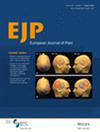Retrospective Assessment of Endometriosis Pain Over the Life Course: A Reliability Study Within the ComPaRe-Endometriosis Cohort
Abstract
Background
Endometriosis may manifest through various pain symptoms, such as dysmenorrhea, dyspareunia, dyschezia, dysuria and abdominal pain. While retrospective evaluation of these pain symptoms is less expensive and time-consuming compared to a prospective evaluation, there is potential for recall bias, and the reliability of such data needs to be assessed. We aimed to evaluate the reliability of questions on past endometriosis-related pain.
Methods
We conducted a reliability study within ComPaRe-Endometriosis, an ongoing prospective e-cohort including patients with endometriosis. We assessed past endometriosis-related pain over a lifetime using the WERF-EPHect Patient Questionnaire—Standard (EPQ-S). Participants rated the worst intensity of dysmenorrhea, dyspareunia, dyschezia, dysuria and abdominal pain that they experienced at ≤ 15, 16–20, 21–30, 31–40 and > 40 years using a numeric-rating scale (NRS). We asked the same questions about 1 year later and measured the agreement between participant responses by calculating intraclass correlation coefficients (ICC) (continuous NRS level) and weighted kappa coefficients (κw) (pain intensity categories).
Results
A total of 1752 participants completed both surveys. The global reliability was close to the ‘good’ and ‘substantial’ thresholds for dysmenorrhea (ICC = 0.74; κw = 0.57) and dyspareunia (ICC = 0.72; κw = 0.57), ‘moderate’ and close to the ‘substantial’ threshold for dysuria (ICC = 0.68; κw = 0.59), and ‘moderate’ for dyschezia (ICC = 0.62; κw = 0.54) and abdominal pain (ICC = 0.58; κw = 0.49).
Conclusions
In this population, questions on worst pain intensity over the life course showed moderate-to-good reliability depending on the type of pain, with higher reliability when pain level was considered as a continuous variable.
Significance Statement
While prospective measures are the most robust approach in epidemiological research, longitudinal data with pain recorded since childhood or adolescence are scarce. This study shows that the worst level of pelvic and abdominal pain over the life course are reliably reported by endometriosis patients after a 1-year interval. These findings suggest that retrospective pain assessment may reliably be used to assess trajectories of pain over the life course in order to gain insights into the progression of pain-related conditions such as endometriosis.

 求助内容:
求助内容: 应助结果提醒方式:
应助结果提醒方式:


